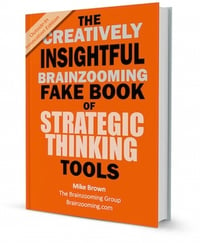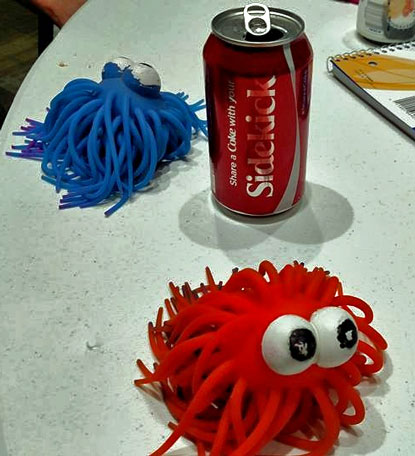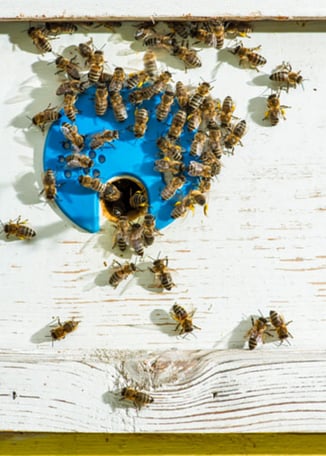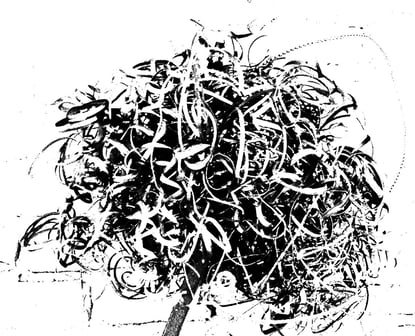How "wild and crazy" should you be in using creative thinking exercises? And do you need to be more or less wild and crazy in teaching creative thinking to a group?
The short answer is, "It depends."
Creative Thinking Exercises without Wild and Crazy
Sometimes, the right answer is not being very wild and crazy at all - not even one little bit.
At least that was the answer during one strategic planning session we were leading back in the B2B, Fortune 500 transportation and logistics days. While onsite with one of our subsidiaries, a Senior VP called me over to talk with the subsidiary’s president before we started working on the annual plan. He plainly and sternly said, "I don't want any funny business." I assured him our approach was to "work," but at some point, there might be a little funny business. Since we needed his agreement to work with his team, we didn't put out any toys. We started by facilitating a relatively staid strategic planning development process. No toys, few jokes, and a clear focus on being all business instead of wild and crazy creative thinking exercises.
As the group relaxed during the day, however, we put out a few squeeze balls. They soon started flinging them at one another. We introduced the “What’s It Like” creative thinking exercise to help them see how their trucking brand was JUST LIKE Ritz-Carlton. Most importantly, at the day’s end, the president said it was "good" and invited us back the next year.
Net result? We were very successful with hardly any wild and crazy creative thinking exercises.
Our Most Wild and Crazy Creative Thinking Exercise
Contrast that with a recent "Doing New with Less" workshop in the heavily regulated financial services industry. One might expect it to be completely serious without any extreme creativity.
It was, but only partially.
We didn't put out toys at the half-day workshop's start. There were no funny slides or typical sight gags to begin. By the end of the workshop, however, we dove headlong into the "Shrimp" creative thinking exercise.
When done well, Shrimp is one of our most outrageous, wild and crazy creative thinking exercises. It pushes participants to initially generate trouble-inducing, extreme creativity ideas that we then scale back to reality.
And the financial services marketers embraced their extreme creativity.
Among the trouble-inducing ideas they imagined initially were psychic economists, Chippendale dancers delivering financial reports, a high school musical to communicate annual performance to individual investors, and giving people scratch cards to discover how lucky they'd be in securing an interest rate.
They turned these wild ideas into a new positioning for their chief economist, new ways to deliver financial updates to clients via a group event, and a simple decision tree to identify interest rate categories.
All this from a wild and crazy creative thinking exercise we rarely teach in workshops because groups aren't THAT ready for extreme creativity.
Extreme Creativity All Depends
The important thing to remember is, however, wild and crazy is simply an ingredient in creative thinking, NOT its sole purpose. You can call us crazy, but that is why we think “how wild and crazy to be” depends completely on the group, the situations, and what our client wants to achieve. - Mike Brown
Need help guiding your team's creative thinking for innovative product ideas?
 Do you need to take better advantage of your brand's customer inputs and market insights to generate innovative product ideas? With the right combination of perspectives from outside your organization and productive strategic thinking exercises, you can ideate, prioritize, and develop your best innovative growth ideas. Download this free, concise ebook to:
Do you need to take better advantage of your brand's customer inputs and market insights to generate innovative product ideas? With the right combination of perspectives from outside your organization and productive strategic thinking exercises, you can ideate, prioritize, and develop your best innovative growth ideas. Download this free, concise ebook to:
- Identify your organization’s innovation profile
- Learn and rapidly deploy effective strategic thinking exercises to spur innovation
- Incorporate crowd sourced perspectives into your innovation strategy in smart ways





